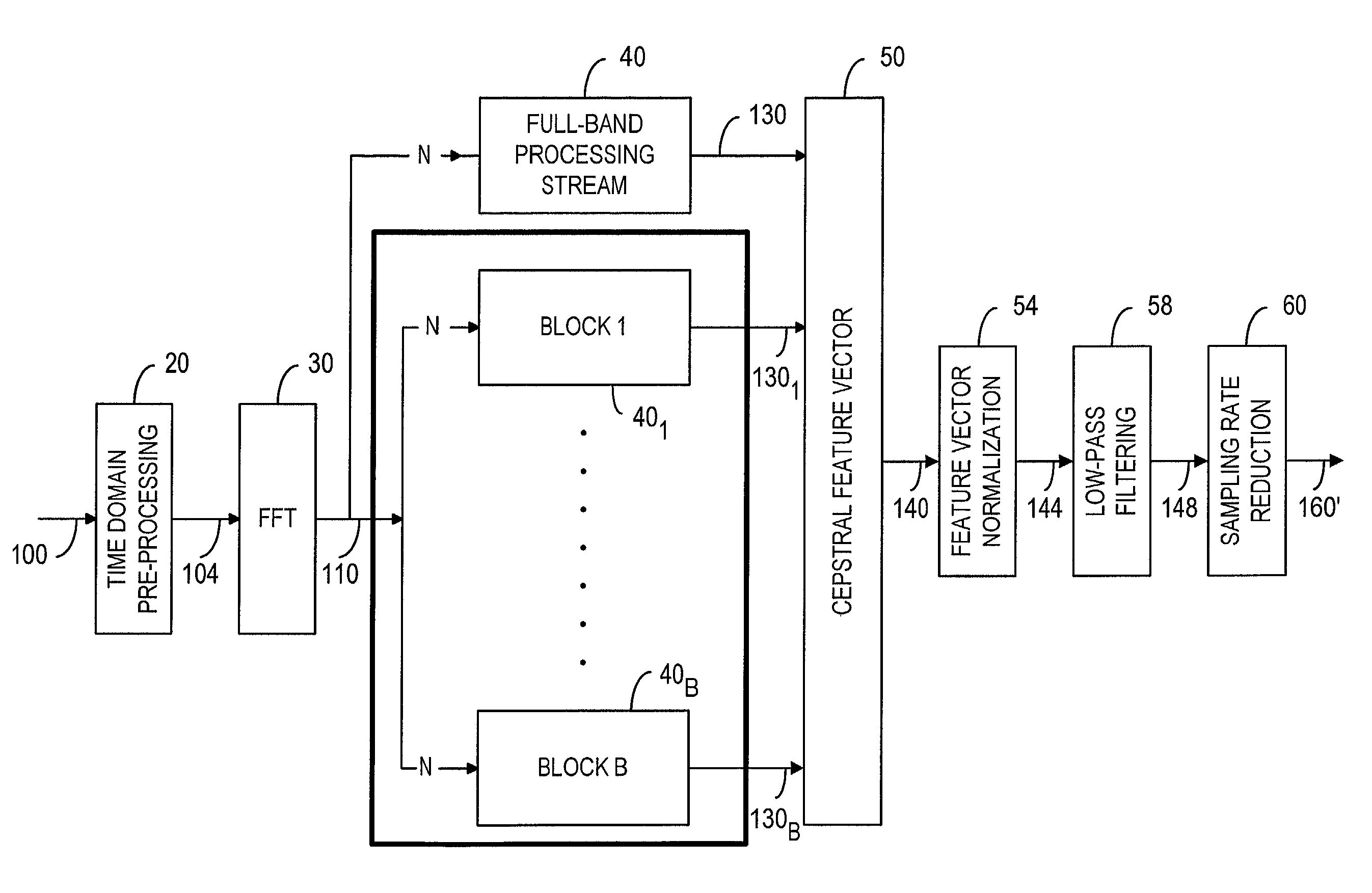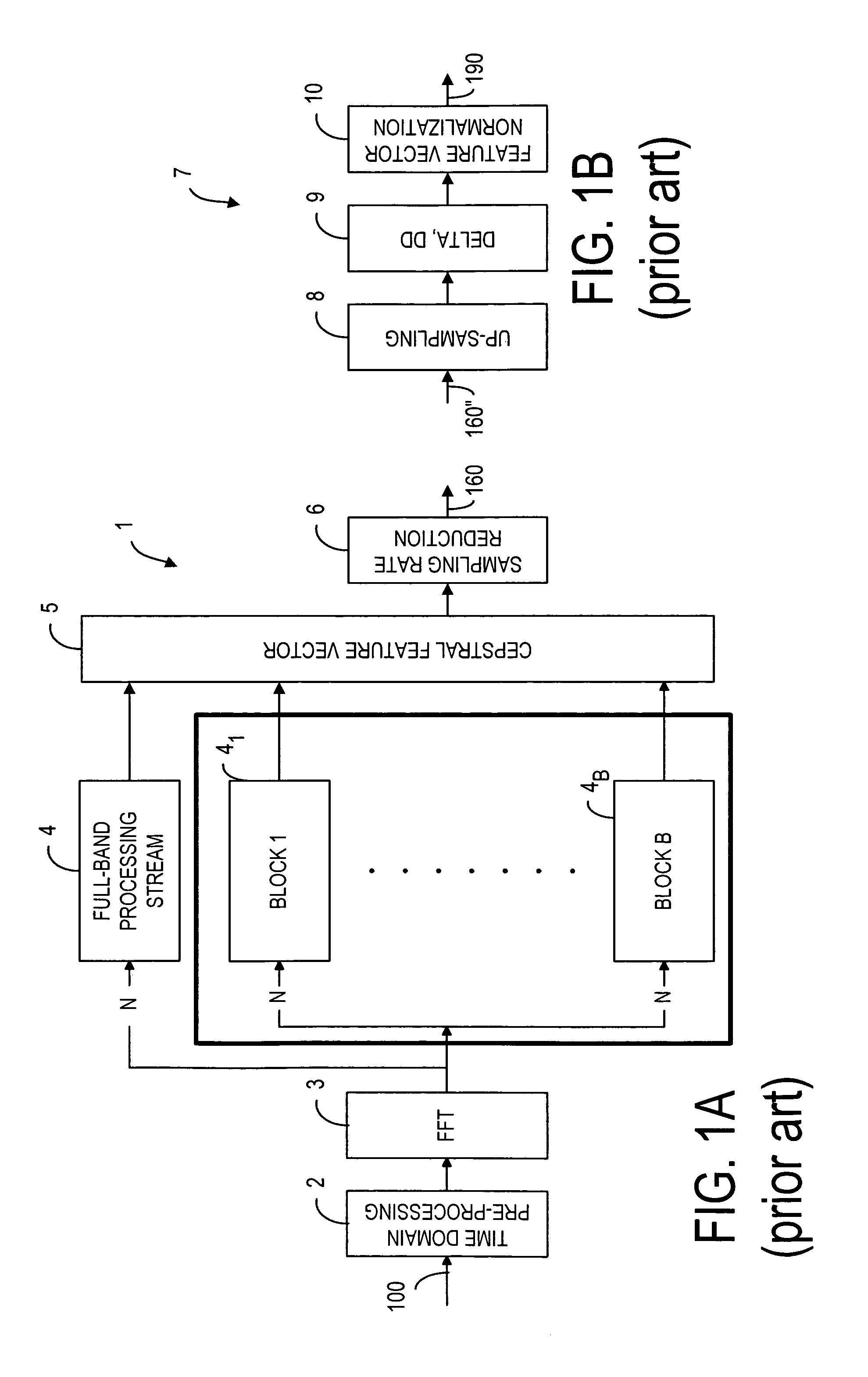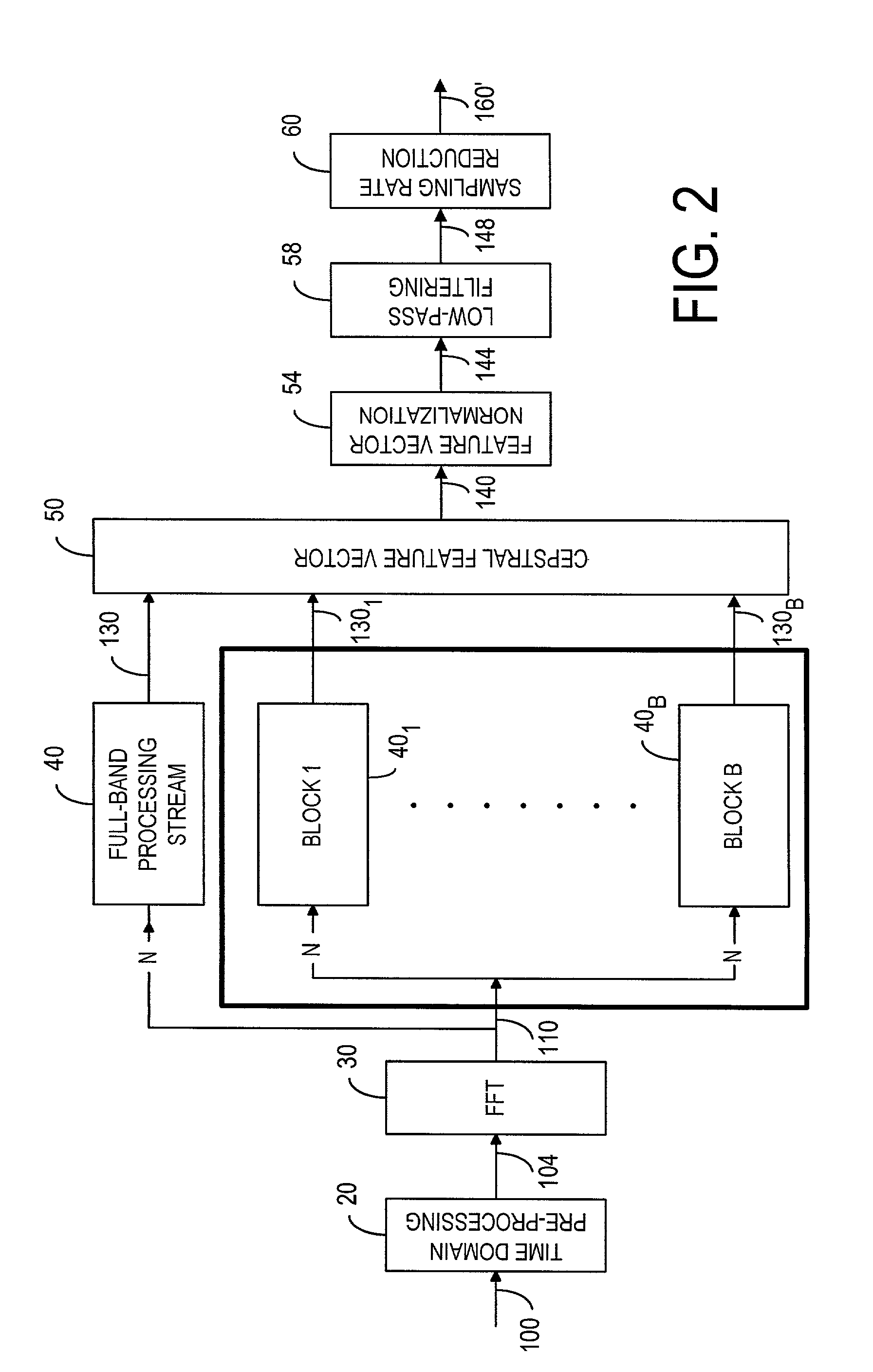Data-driven filtering of cepstral time trajectories for robust speech recognition
a data-driven filtering and robust speech technology, applied in the field of speech recognition, can solve the problems of radio transmission errors, speech coding errors, significant degradation of speech recognition accuracy, etc., and achieve the effect of efficiently filtering out the noise component of speech parameters and improving speech recognition efficiency
- Summary
- Abstract
- Description
- Claims
- Application Information
AI Technical Summary
Benefits of technology
Problems solved by technology
Method used
Image
Examples
Embodiment Construction
[0050]As shown in FIG. 2, a distributed-speech recognition front-end 12 includes a time-domain pre-processing device 20 to receive and process a speech signal 100. As discussed in ETSI ES 201 108 V1.1.2 and Nokia ETSI-STQ W1008, the time-domain pre-processing device is typically used for sampling and pre-emphasizing the speech signal 100 with a low-order, high-pass filter and then segmenting the speech signal into 30 ms frames with 10 ms spacing. Each frame is multiplied by a 30 ms Hamming window. Pre-emphasis is a filtering process in which the frequency response of the filter has emphasis at a given frequency range. In speech recognition, the high-frequency range of the signal spectrum is pre-emphasized. The time-domain pre-processed speech signal is denoted by numeral 104. In an FFT device 30, a Fast Fourier Transform algorithm is used to convert the speech samples 104 from the time domain to the frequency domain in order to compute the magnitude spectrum of the speech signal. Fr...
PUM
 Login to View More
Login to View More Abstract
Description
Claims
Application Information
 Login to View More
Login to View More - R&D
- Intellectual Property
- Life Sciences
- Materials
- Tech Scout
- Unparalleled Data Quality
- Higher Quality Content
- 60% Fewer Hallucinations
Browse by: Latest US Patents, China's latest patents, Technical Efficacy Thesaurus, Application Domain, Technology Topic, Popular Technical Reports.
© 2025 PatSnap. All rights reserved.Legal|Privacy policy|Modern Slavery Act Transparency Statement|Sitemap|About US| Contact US: help@patsnap.com



